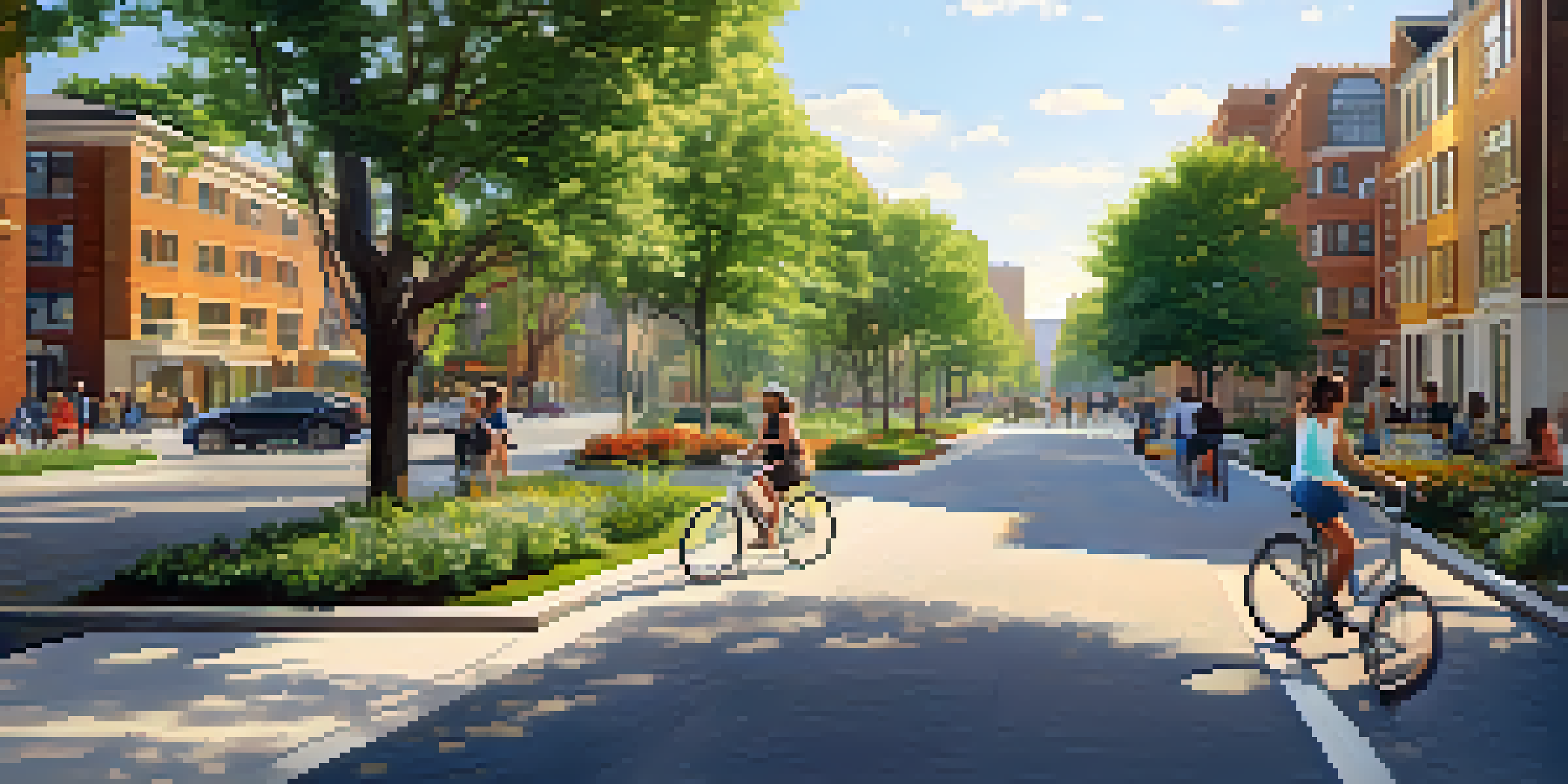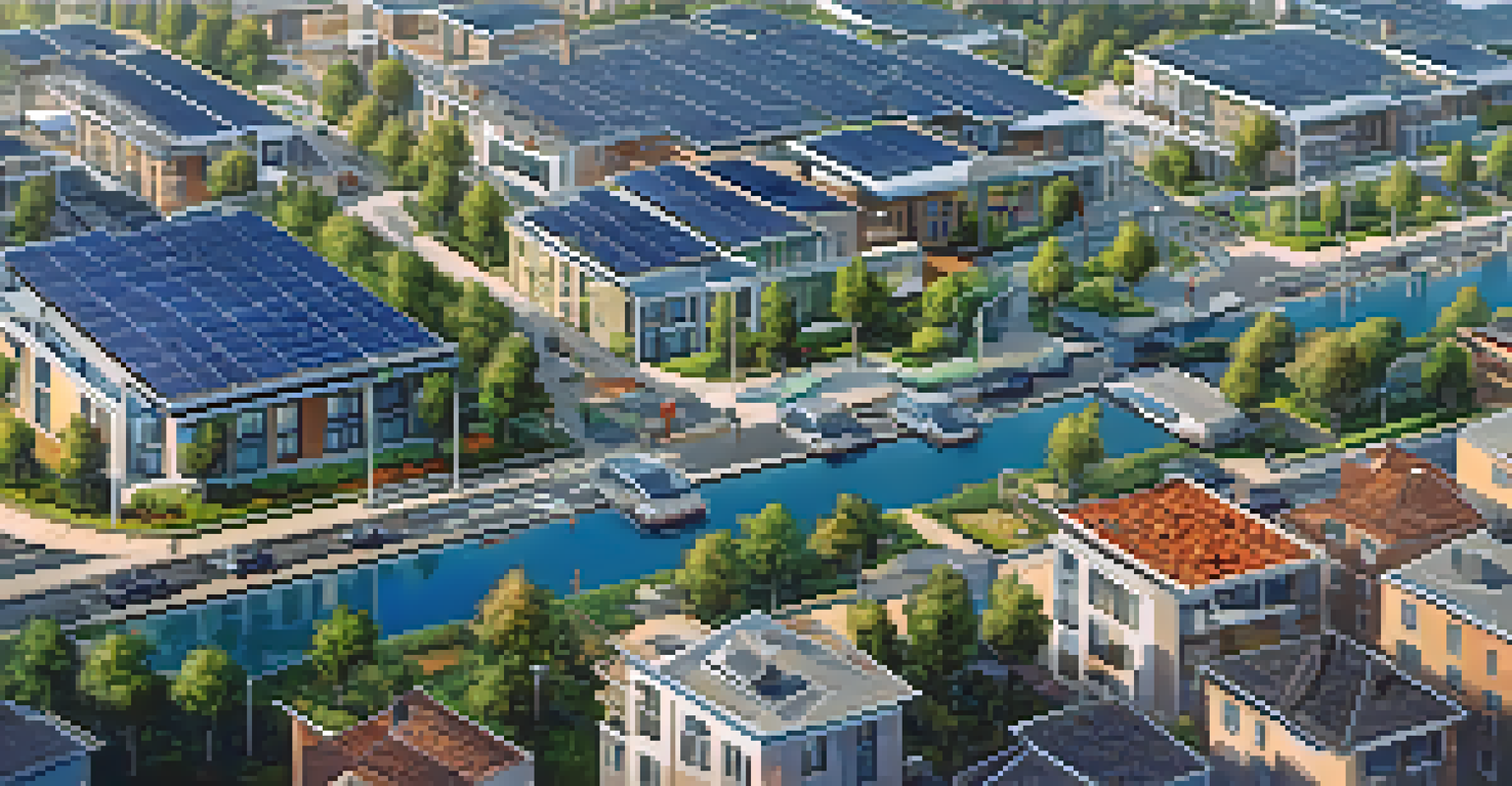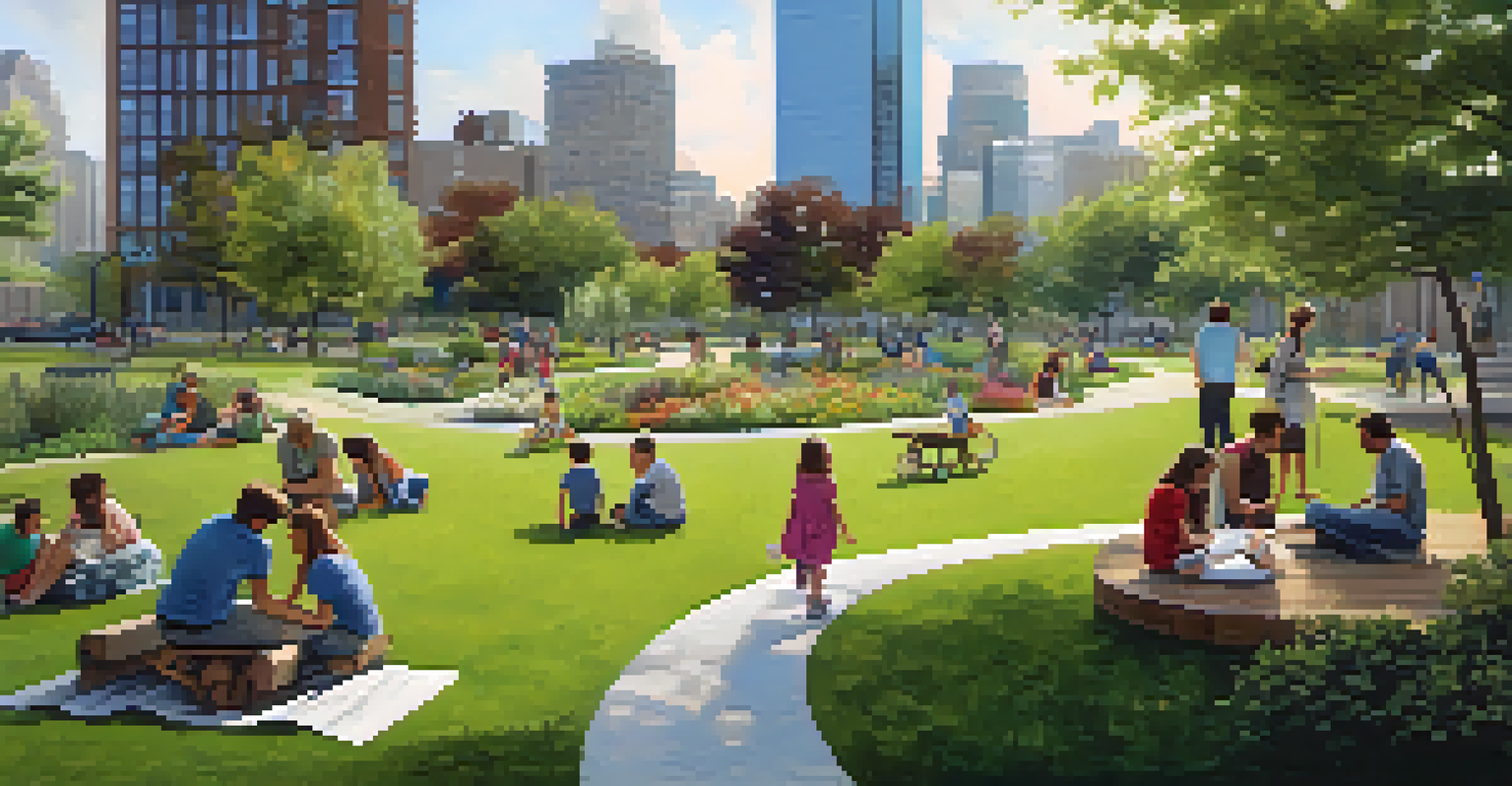How Urban Development Affects Real Estate Prices

Understanding Urban Development and Its Importance
Urban development refers to the process of improving and expanding city infrastructure, such as transportation, housing, and public spaces. This development plays a crucial role in shaping the livability and functionality of urban areas. As cities grow, the demand for housing and amenities increases, which directly impacts real estate prices.
Cities are the greatest creation of humanity, and they are also the greatest challenge we face as a civilization.
For instance, when a new public transit line is introduced, it's common to see surrounding property values rise as accessibility improves. The convenience of public transport can make certain neighborhoods more desirable, drawing in buyers and renters alike. This phenomenon shows how closely intertwined urban development and real estate markets can be.
Understanding urban development is essential for potential buyers and investors. By recognizing trends in urban planning, they can make informed decisions about where to invest or live, ensuring they are part of a thriving community.
The Role of Infrastructure in Real Estate Pricing
Infrastructure is often the backbone of urban development, encompassing roads, utilities, and public facilities. When cities invest in these systems, they enhance the quality of life for residents, making areas more attractive for potential homeowners. As a result, neighborhoods with robust infrastructure tend to see higher real estate prices.

Consider a suburban area that builds a new school or park; these additions can significantly boost property values. Families with children may be more inclined to purchase homes nearby, leading to increased competition and higher prices. This relationship highlights the importance of infrastructure in shaping real estate dynamics.
Urban Development Shapes Real Estate
The growth of urban infrastructure directly influences property values and desirability in neighborhoods.
Investors looking to capitalize on burgeoning markets should evaluate infrastructure plans within a city. Areas slated for upgrades often present opportunities for appreciation in real estate values, making them attractive investment targets.
How Zoning Laws Impact Real Estate Development
Zoning laws are regulations that determine how land can be used in specific areas, shaping the character of neighborhoods. These laws can significantly influence real estate prices by dictating what types of buildings can be constructed and where. For example, areas zoned for high-density housing may see a surge in apartment complexes, attracting investors and raising property values.
Urban development should be about enhancing quality of life, not just increasing property values.
Conversely, restrictive zoning laws can limit development, leading to a scarcity of housing options. When demand exceeds supply, prices naturally rise, making homes less affordable. Understanding the zoning landscape is crucial for anyone looking to buy or invest in real estate.
In summary, zoning laws serve as a double-edged sword. They can either facilitate growth and boost property values or restrict development and drive prices higher due to limited availability.
The Influence of Economic Factors on Urban Development
Economic conditions play a pivotal role in urban development and, by extension, real estate prices. When the economy thrives, cities often see increased investment in infrastructure and housing projects, driving demand for real estate. This can lead to rising property values as more people seek to live in these vibrant, developing areas.
On the flip side, during economic downturns, urban development may stall, resulting in stagnation or even decline in real estate values. For instance, if a recession occurs, developers may halt projects, leading to fewer new homes on the market and ultimately impacting prices negatively.
Zoning Laws Affect Housing Supply
Zoning regulations can either promote or restrict development, impacting the availability and pricing of real estate.
It's essential for buyers and investors to monitor economic indicators, such as job growth and unemployment rates, as they can provide insight into future urban development trends and their potential impact on real estate prices.
The Impact of Gentrification on Neighborhoods
Gentrification refers to the process where urban neighborhoods undergo transformation due to an influx of wealthier residents. This often leads to increased property values and a shift in the local culture, which can have both positive and negative effects. While some may celebrate the revitalization of a community, long-time residents may find themselves priced out of their homes.
For example, a previously underdeveloped area might attract new cafes, shops, and businesses as it becomes more desirable. As these changes occur, property prices tend to rise, benefiting current homeowners but making it harder for new buyers. This dynamic underscores the complexity of urban development and its impact on real estate markets.
Understanding gentrification is crucial for those looking to invest in emerging neighborhoods. While there can be significant profit potential, it's important to consider the social implications and community responses that may arise from such changes.
Environmental Considerations in Urban Development
As urban development progresses, environmental considerations have become increasingly important. Sustainable practices, such as green building and eco-friendly infrastructure, can enhance a property's appeal and value. Buyers are becoming more conscious of their ecological footprint, and homes that incorporate sustainable features often command higher prices.
For example, neighborhoods that prioritize parks, green spaces, and energy-efficient buildings are likely to attract buyers seeking a healthier lifestyle. This trend reflects a growing awareness of the importance of balancing urban growth with environmental stewardship.
Gentrification Alters Neighborhoods
The influx of wealthier residents in urban areas can lead to rising property values, but may also displace long-time residents.
Investors should pay attention to how environmental factors are integrated into urban development. Properties in eco-conscious communities not only contribute to a healthier planet but also stand to gain in value as demand for sustainable living increases.
Future Trends in Urban Development and Real Estate
Looking ahead, urban development trends are shifting towards smart city initiatives, which leverage technology to improve urban living. From traffic management systems to energy-efficient buildings, these innovations can significantly influence real estate prices. As cities adopt smarter technologies, neighborhoods that embrace these changes will likely see a rise in property values.
Additionally, the ongoing emphasis on mixed-use developments—where residential, commercial, and recreational spaces coexist—can enhance the appeal of urban living. Such developments create vibrant communities that attract a diverse range of residents, further driving demand for real estate.

Staying informed about future urban development trends is crucial for potential buyers and investors. By understanding where the market is headed, they can position themselves to take advantage of emerging opportunities in the real estate landscape.